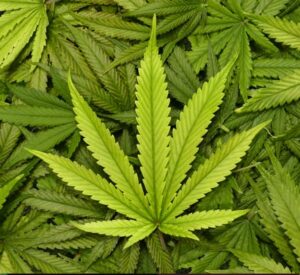By Maria Ofitserova, PhD.
 Analytical laboratories are faced with the task of expanding their testing capabilities to meet the Cannabis Industry’s regulatory requirements as the number of States that legalize Cannabis increases. Without clear Federal regulations, testing requirements differ between States, however, most require to test Cannabis and Cannabis-containing products for potency as well as contaminants such as heavy metals, residual solvents, pesticides, and mycotoxins.
Analytical laboratories are faced with the task of expanding their testing capabilities to meet the Cannabis Industry’s regulatory requirements as the number of States that legalize Cannabis increases. Without clear Federal regulations, testing requirements differ between States, however, most require to test Cannabis and Cannabis-containing products for potency as well as contaminants such as heavy metals, residual solvents, pesticides, and mycotoxins.
Cannabis cultivating conditions are known to promote the growth of mold and Aspergillus species, a common source of contamination in plant material. Aspergillus are the main fungi that produce Aflatoxins and Ochratoxin A so it is not surprising that these mycotoxins are on the list of regulated contaminants in most States.
Aflatoxins are known carcinogens and due to their stability, they easily persist through processing and can carry not only into dry plant products but also into various extracts and edible goods. Aflatoxins B1, G1, B2, and G2 are especially dangerous to humans and inhaling or ingesting them, even in low doses, over a period of time can cause chronic diseases and cancers.
Since many States have established regulatory limits, not only for total Aflatoxins but also separately for Aflatoxin B1, HPLC methods offer the perfect approach to analyze Mycotoxins in Cannabis and Cannabis products. Separation of Aflatoxins B1, B2, G1 and G2 as well as Ochratoxin A is easily accomplished on a reversed-phase column and the addition of a photochemical reactor increases sensitivity of detection for Aflatoxins B1 and G1 and allows to readily meet even the strictest regulatory limits.
Pickering Laboratories has demonstrated that the simultaneous analysis of Aflatoxins and Ochratoxin A in Cannabis and different types of Cannabis-containing products can be successfully accomplished by HPLC with photochemical derivatization and fluorescence detection. Sample preparation using a single immunoaffinity cleanup column, utilizing Mycotoxin selective antibodies, allows for eliminating interferences and concentrating Mycotoxins to increase the sensitivity of analysis. The same method can be used for the analysis of hemp plant material and extracts and hemp-containing products. This approach has a proven performance for many commodities and is the basis of AOAC 2008.02 official method for analysis of Aflatoxins and Ochratoxin A in Ginseng and Ginger.
Maria Ofitserova, Ph.D.
Senior Research Chemist
Pickering Laboratories, Inc.
1280 Space Park Way
Mountain View, CA 94043, USA
Email: maria_o@pickeringlabs.com
Phone: (650) 694-6700 x703

